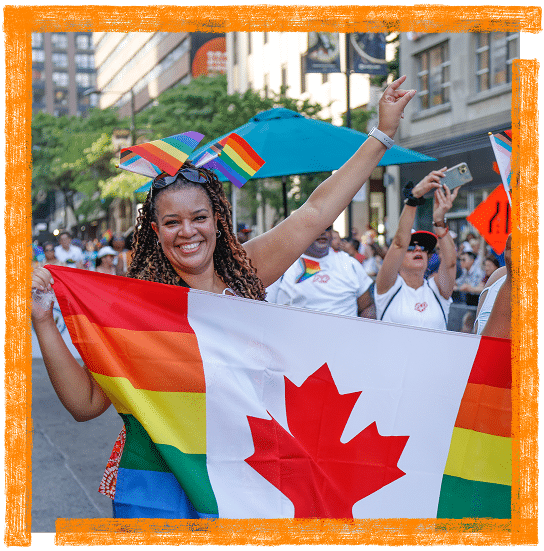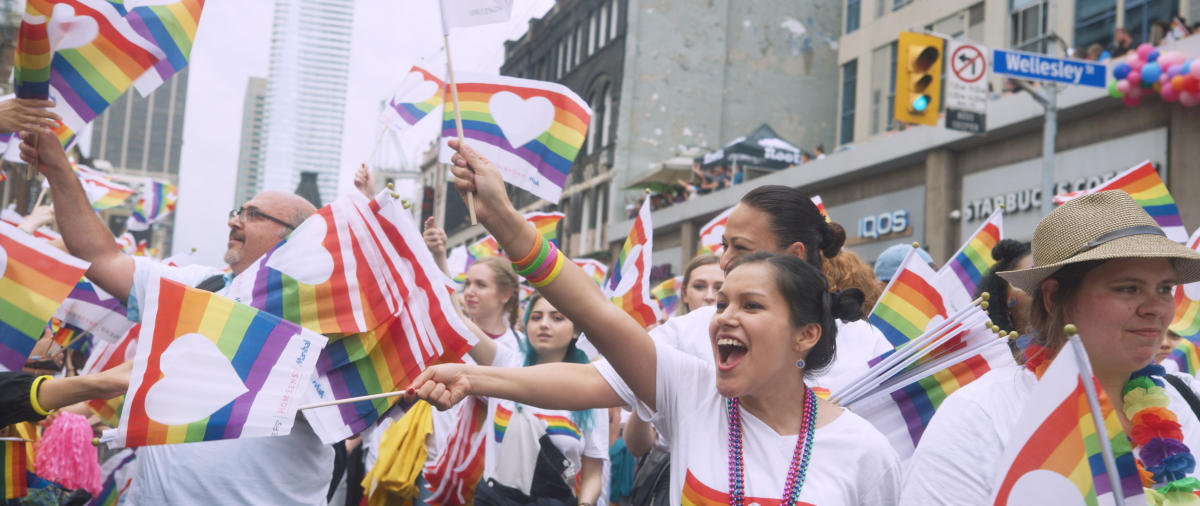Pride Toronto is Canada’s largest and most celebrated LGBTQIA+ pride festival, attracting millions of participants from across the country and around the world every summer. Established over four decades ago, this annual event is a vibrant mix of celebration, activism, and education that highlights the diversity and resilience of the LGBTQIA+ community. Pride Toronto is not only a festive parade but also a crucial platform for promoting human rights, social inclusion, and equality in Canadian society.

History and Evolution
Pride Toronto traces its roots back to 1971 when the first Toronto Gay Pride Week was organized to commemorate the Stonewall Uprising and to fight for LGBTQIA+ rights. Over the years, it has evolved from a modest gathering into one of North America’s most significant pride events.

The event is currently coordinated by Pride Toronto, a nonprofit organization dedicated to advancing the rights and well-being of the LGBTQIA+ community through advocacy and celebration. Pride Toronto has witnessed several historic milestones, including calls for marriage equality, anti-discrimination laws, and increased visibility for transgender and non-binary people.
When and Where It Happens
Pride Toronto is held every June, typically culminating on the last weekend with a massive parade and festival. The main events are centered in downtown Toronto, with Church-Wellesley Village serving as the heart of the celebrations. This neighborhood is renowned for its strong LGBTQIA+ community presence and serves as a gathering point for locals and visitors alike.
The parade route generally spans from Bloor Street to Church Street and then down to Yonge Street, passing iconic landmarks and drawing crowds of over one million people in some years.
Festival Highlights and Events
Pride Toronto offers a multi-day program packed with a wide range of activities that cater to all ages and interests, including:
- The Pride Parade: The highlight of the festival, featuring floats, drag performances, community groups, political figures, and corporate sponsors marching in solidarity.
- Pride Festival at Nathan Phillips Square: A large open-air event hosting musical performances, speeches, art exhibitions, and food vendors.
- Trans March: Dedicated to uplifting and centering transgender voices, this event raises awareness of the issues facing trans and non-binary individuals.
- Family Day: An inclusive celebration welcoming families with children to participate in pride activities.
- Dyke March: A grassroots event celebrating lesbian visibility and feminist activism.

These events emphasize the diversity of experiences within the LGBTQIA+ community and promote intersectionality.
Themes and Advocacy
Each year, Pride Toronto adopts a theme that reflects current social issues or celebrates particular aspects of LGBTQIA+ identity and history. These themes guide the messaging in parades, workshops, and public outreach campaigns.

In recent years, themes have included:
- “Rise Up” – Emphasizing resilience and activism amid ongoing challenges.
- “Pride’s Promise” – Focusing on community support and future commitments to equality.
- “Intersectionality and Inclusion” – Highlighting marginalized voices within the LGBTQIA+ community.
Advocacy remains central to Pride Toronto’s mission, focusing on issues such as combating discrimination, advancing legal protections, and promoting mental health and wellness.
Social and Economic Impact
Pride Toronto has a significant economic impact on the city, generating over $300 million CAD annually through tourism, hospitality, and related services. Hotels, restaurants, shops, and entertainment venues experience a surge in business during the festival.

Beyond economics, Pride Toronto plays a vital role in shaping public attitudes, fostering acceptance, and promoting diversity. The event has helped transform Toronto into one of the most LGBTQIA+ friendly cities in the world.
Safety and Accessibility
Given the large scale of the event, Pride Toronto organizers work closely with city officials and law enforcement to ensure safety and accessibility. The festival promotes a zero-tolerance policy toward hate speech, harassment, and discrimination.
Efforts to improve accessibility include:
- Accessible viewing areas for people with disabilities
- Sign language interpretation at major events
- Quiet zones for those with sensory sensitivities
- Comprehensive transit information and support
These measures help ensure that Pride Toronto is inclusive and welcoming to everyone.
How to Attend and Participate
Pride Toronto is open to all, with many events free of charge. Visitors are encouraged to plan ahead, especially for accommodations and transportation, as the city becomes particularly busy during Pride Week.
Groups or organizations interested in joining the parade need to register through the official Pride Toronto website, where guidelines and deadlines are clearly outlined.
At a Glance
Pride Toronto stands as a shining example of LGBTQIA+ pride, resilience, and activism in Canada. It combines vibrant celebrations with meaningful advocacy, creating a space where individuals can celebrate their identities while working toward greater social justice. Whether as a participant, ally, or observer, attending Pride Toronto offers a powerful experience that highlights the ongoing journey toward equality and acceptance.
Useful Links
| Resource | Link |
|---|---|
| Official Pride Toronto Website | https://www.pridetoronto.com |
| City of Toronto LGBTQ Services | https://www.toronto.ca/community-people/community-partners/lgbtq-community-services |
| Tourism Toronto | https://www.seetorontonow.com |


